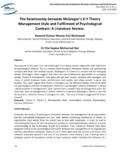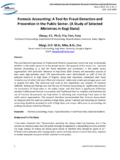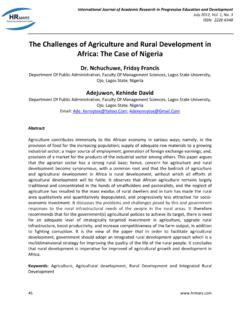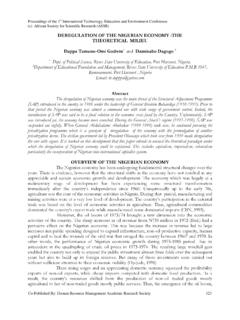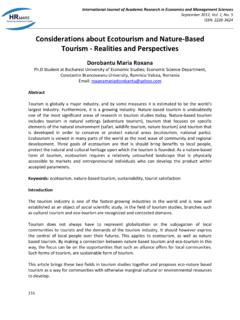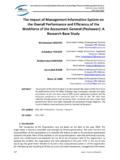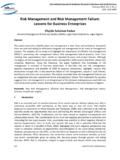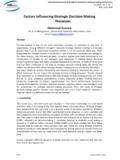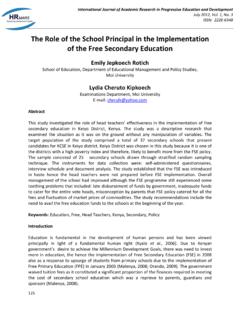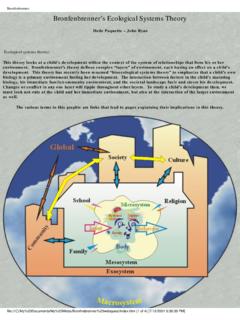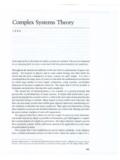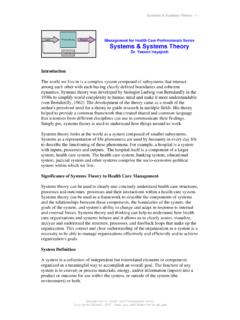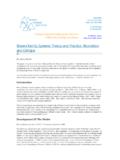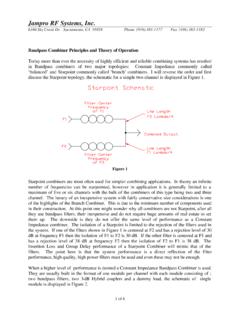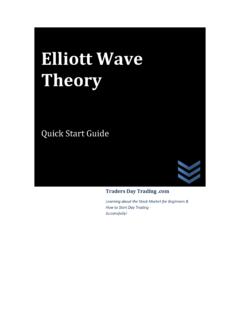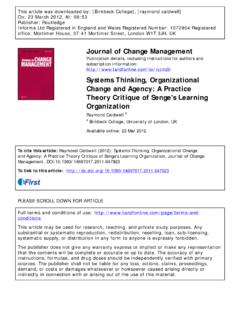Transcription of A Critique of the Systems Theory of J. T. Dunlop
1 International Journal of Academic Research in Economics and Management Sciences March 2013, Vol. 2, No. 2 ISSN: 2226-3624 97 A Critique of the Systems Theory of J. T. Dunlop Jayeoba, Foluso Ilesanmi Department Of Industrial Relations And Personnel Management, Faculty Of Management Sciences, Lagos State University, Ojo Email: Ayantunji, Oyelekan Ishola Department Of Industrial Relations And Personnel Management, Faculty Of Management Sciences, Lagos State University, Ojo Sholesi, Olayinka Yusuf Department Of Industrial Relations And Personnel Management, Faculty Of Management Sciences, Lagos State University, Ojo Email.
2 Abstract Every theoretical proposition has underpinning logic that seeks to match the premises with the conclusions. Theory has dynamic interference with time and space. The time dimensionality of a Theory does not set absolute boundary on the variables under consideration. One variable A may be held constant against another variable B to produce C. The extent to which the third variable continues to hold true will be determined to a large extent by the degree with which either of A and B or both can be held constant over time and space.
3 Viewing Dunlop s Theory which essential proposition is that Industrial Relations is composed of three actors which operate in contexts that is dependent on the ideological milieu and a binding set of rules, it may be argued that the three-actor component of this Theory can be subject to further analysis in view of the changing nature of industries and organisations that the Theory may be deemed to apply. This paper is an attempt at reexamining Dunlop s view of the workplace as it has evolved and is evolving into the 21st century. This work shows that there are indeed many more actors in the workplace and that the contextual factors have changed considerably since the Theory was proposed.
4 So also are the ground rules of engagement among the many actors. Keywords: Theory , Systems Theory . Introduction That every Theory has intrinsic fallacy is well known. Also true is the fact that some theories have such intuitive appeal and rather strong face validity that it often take more than a second look to detect any form of shortcoming. The inherent appeal of Dunlop s Systems Theory is almost innate. There are many such theories in existence in Management and Social Sciences. International Journal of Academic Research in Economics and Management Sciences March 2013, Vol.
5 2, No. 2 ISSN: 2226-3624 98 Freud s psychoanalytic Theory is one of such Theory . It has an appealing explanatory power that has continued to tickle intellectual fancy for ages. Yet most of the constructs such as id, ego and super ego which has taken firm position and use in ordinary language not only has surplus meaning, but are largely not measurable, nor easily verifiable. Equally, the Theory had enjoyed little empirical support. Another popular Theory with little empirical support is Maslow s hierarchy of needs Theory . Dunlop assumed a three-actor stage for industrial relations and diminishing the crucial roles of several component entities that cooperate to bring the stage to reality.
6 Before the stage is set in theatre, there are several background activities and activists. Some of these are the script writer, producer, director, engineers, costumers, prompters, players and so forth. Actors in reality only assume the roles that are prescribed for them which in many instances are contrived roles. However, one cannot deny that performance of and in the roles depends on the personality, perception or interpretation of roles and experience of the actors. Also the context (the architectural infrastructure, the stage and spectatorship) are also important.
7 The roles of actors in industrial relations can be said to be impacted upon by sundry other factors other than what has been acknowledged in literature. Aims and objectives The aims and objectives of this critical essay is to examine the Systems Theory of J. T. Dunlop using ideas from earlier critics as a starting point and from the perspectives of recent developments that have global impacts and those that are native to the Nigerian industrial relations system . Some of these developments call for a modification of crucial aspects of the Theory .
8 What a Theory is A Theory is an objective proposition consisting of a logically coherent statement(s) that serves as a guide for understanding of a phenomenon. According to Kerlinger (1973) a Theory is a set of interrelated constructs (concepts), definitions, and propositions that present a systematic view of phenomena by specifying relations among variables, with the purpose of explaining and predicting the phenomena. Viewing the system s Theory from these perspectives one could say that attempt was made by Dunlop to provide a coherent body of statements that aims not only at explaining certain crucial variables in industrial relations and also predicting them.
9 Aims and objectives of good Theory A good Theory serves at least five objectives which can serve as ground rules for its criticism. These objectives are 1. Must set out the relationships among variables 2. Set out the nature and direction of relationships 3. Provide a clear framework for understanding the relationships and 4. Serve as a guide to prediction. 5. Have empirical validity. International Journal of Academic Research in Economics and Management Sciences March 2013, Vol. 2, No. 2 ISSN: 2226-3624 99 The extent to which Dunlop s Theory has succeeded on these scores has been underscored in the various criticisms that it has attracted.
10 Some of these will be highlighted. Specific focus will be on the proposition of a three-actor situation, which neglects the dynamic nature of such actors in terms of their personality and psycho-social variables underlining their behaviour within the bounds of the context, ideology and rules delineating their actions. It will be interesting to ask, perhaps a belated question, is industrial relations indeed a system ? It will also be of theoretical, as well as practical question, to ask whether there are indeed only three set of actors in the industrial relations system .
